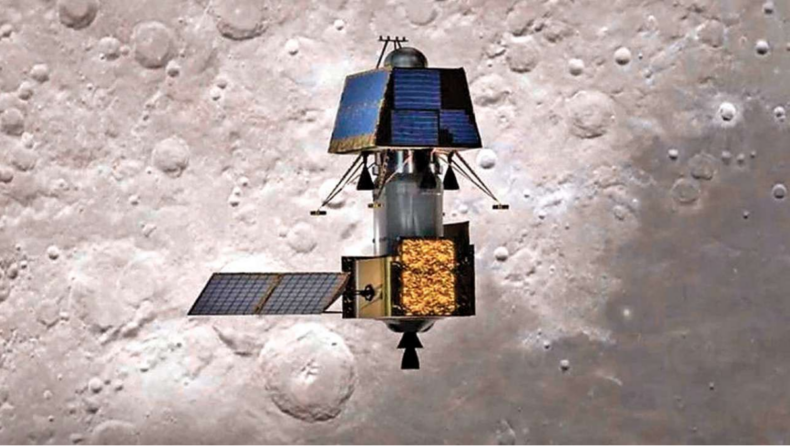Although NASA Apollo-17 and LADEE (Lunar Atmosphere and Dust Environment Explorer) also confirm the presence of Argon-40 in the Lunar Exosphere through dust lofted in the lunar sky.
But the measurement is confined to the only near-equatorial region of the moon. The uniqueness in the findings of CHACE-2 is the diurnal and spatial variation of Ar-40 covering the equatorial and mid-latitude regions of the moon.
Chandra’s Atmospheric Composition Explorer-2 (CHACE-2), a quadrupole mass spectrometer onboard Chandrayaan-2 mission has made the first-of-its-kind observations of the global distribution of Argon-40 in the tenuous lunar exosphere.
These observations provide insight into the dynamics of the lunar exospheric species, as well as on the radiogenic activities in the first few tens of meters below the lunar surface. As said by the Indian space of research organisation.
What is Argon-40?
Argon is a Nobel gas. Which is one of the six naturally occurring noble gases helium, neon, argon, krypton, xenon, and radioactive radon. They are all odorless, colorless, monatomic gases with very low chemical reactivity.
Argon-40 is an isotype of Argon, arises from the radioactive decay of potassium-40.
CHACE-2 observations showed for the first time that the variation in the number density of Ar-40 with respect to solar longitudes are similar to that of low latitude regions, despite the differences in temperature and topography.
There are localized enhancements (termed as Argon bulge) over several regions including the KREEP (potassium (K), rare-earth elements, and phosphorus (P)) and South Pole Aitken terrain.
The observations of Argon bulge by CHACE-2 are indicative of unknown or additional loss processes, Moon quakes or regions with lower activation energies, which call for a better understanding of the surface-exosphere interactions and source distributions of Ar-40.
CHACE-2 was a sequel to the CHACE experiment on the Moon Impact Probe (MIP) of Chandrayaan-1 mission and also draws heritage from the Mars Exospheric Neutral Composition Analyzer (MENCA) experiment aboard the Indian Mars Orbiter Mission.
Published By – Damandeep Singh
Edited By-Kritika Kashyap













